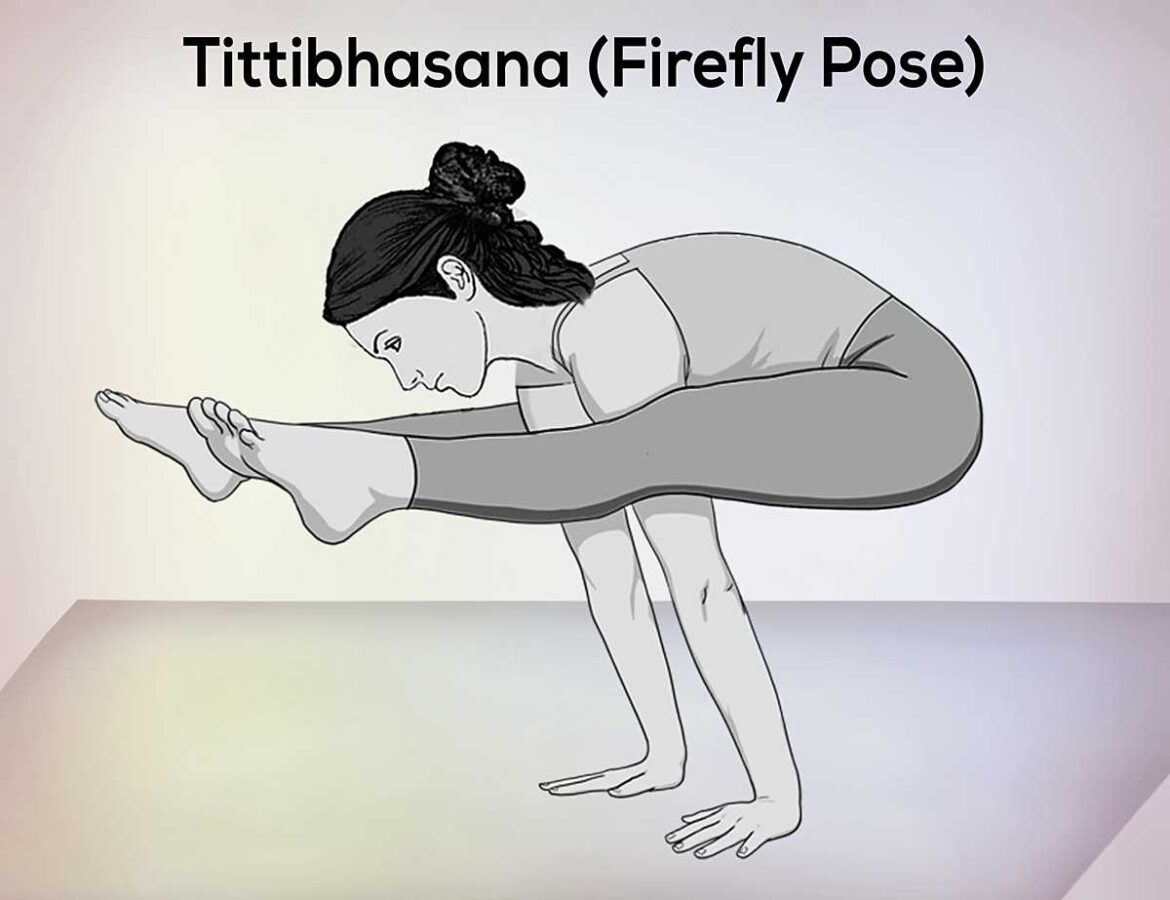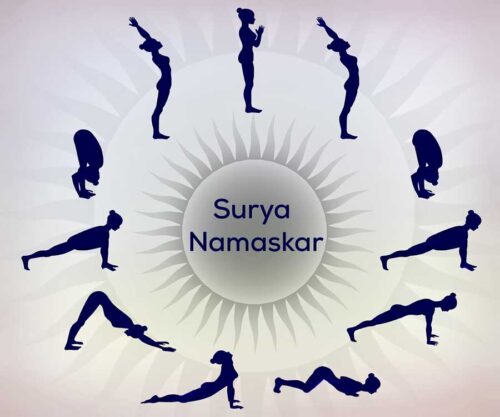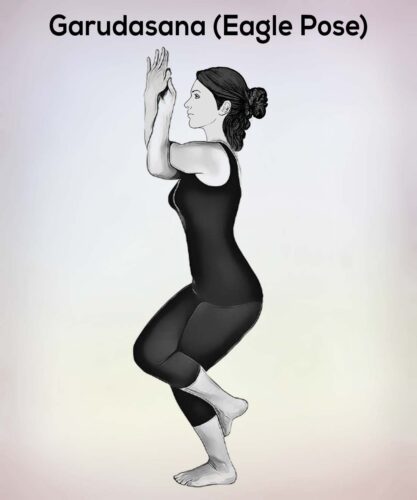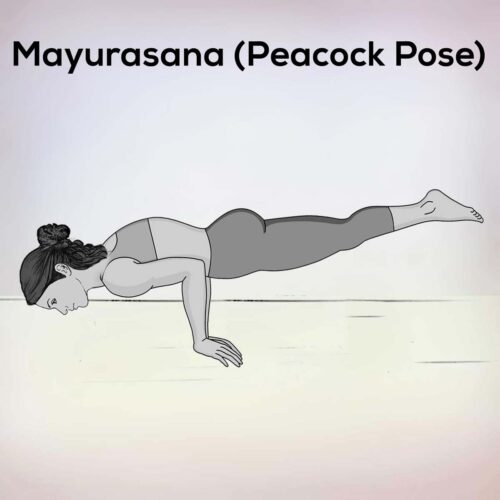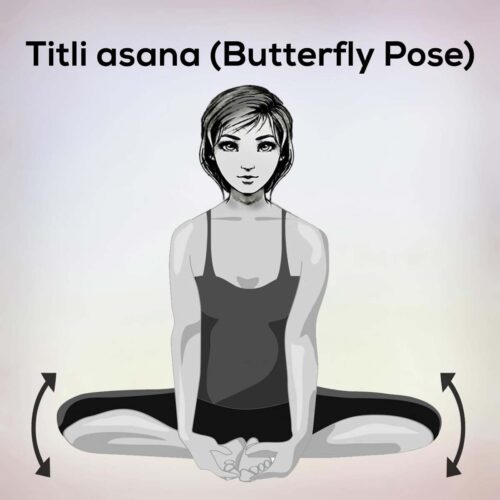Tittibhasana (Firefly Pose): A Complete Guide to Mastering the Arm Balance
Tittibhasana, or Firefly Pose, is an advanced arm-balancing yoga asana that demands significant arm and core strength, along with flexibility and balance. In this posture, practitioners lift their bodies off the ground using their arms while extending their legs forward, forming a shape that resembles a firefly in flight. This challenging pose helps enhance core strength, stretch the hamstrings, improve overall body control, and sharpen balance. Since it puts considerable pressure on the wrists, arms, and shoulders, it’s recommended to warm up these areas before attempting the pose. Traditional Hatha Yoga suggests beginning with Pawanmuktasana—a series of energy-releasing movements that prepare the joints and muscles, promoting mobility and helping to release subtle energy blockages—to ensure a safe and effective practice.
What Is Tittibhasana (Firefly Pose)?
Tittibhasana (pronounced tit-tee-bha-sa-na) derives from the Sanskrit words “tittibha,” meaning small insect or firefly, and “asana,” meaning posture or seat. The pose mimics the appearance of a firefly with its wings spread, symbolizing lightness and agility. In this asana, the practitioner balances on their hands while extending the legs forward and upward, creating a dynamic and graceful posture.
Tittibhasana Meaning and Origin
The term “Tittibhasana” comes from Sanskrit, where “tittibha” refers to a small insect or firefly, and “asana” means posture. This pose is part of the Hatha yoga tradition and has been popularized in modern yoga practices for its physical and mental benefits. The imagery of a firefly represents the lightness and elevation achieved through this challenging arm balance.
Benefits of Tittibhasana (Firefly Pose)
Practicing Tittibhasana offers numerous physical and mental benefits:
- Strengthens Arms and Wrists: Supports body weight, enhancing upper body strength.
- Tones the Core: Engages abdominal muscles, improving core stability.
- Stretches Hamstrings and Groin: Increases flexibility in the lower body.
- Enhances Balance and Coordination: Develops proprioception and body awareness.
- Boosts Mental Focus: Requires concentration and mindfulness, promoting mental clarity.
Step-by-Step Guide to Tittibhasana
- Warm-Up: Begin with poses like Malasana (Garland Pose) and Prasarita Padottanasana (Wide-Legged Forward Bend) to prepare the hips and hamstrings.
- Starting Position: Stand with feet shoulder-width apart.
- Hand Placement: Bend forward, placing hands on the floor behind the heels, fingers pointing forward.
- Leg Positioning: Bend knees and carefully place the upper arms behind the thighs.
- Lift-Off: Shift weight onto the hands, engage the core, and lift the feet off the ground.
- Extend Legs: Straighten the legs forward, keeping them off the floor.
- Hold the Pose: Maintain the position for a few breaths, focusing on balance and alignment.
Variations of Firefly Pose
- Bhujapidasana (Shoulder-Pressing Pose): Similar arm balance with legs crossed at the ankles.
- Eka Hasta Bhujasana (Elephant’s Trunk Pose): One leg extended forward while the other wraps around the arm.
- Firefly Pose with Bent Knees: A beginner-friendly variation with knees slightly bent.
Preparatory Poses for Tittibhasana
To build the necessary strength and flexibility for Firefly Pose, incorporate the following preparatory poses into your practice:
- Malasana (Garland Pose): Opens the hips and groin.
- Bakasana (Crow Pose): Develops arm balance and core strength.
- Upavistha Konasana (Seated Wide-Angle Pose): Stretches the hamstrings and inner thighs.
Lizard Pose (Utthan Pristhasana): Enhances hip flexibility.
Firefly Pose for Beginners
For those new to Tittibhasana, consider these tips:
- Use Props: Place yoga blocks under the hands for added support.
- Practice Near a Wall: Provides a safety net and helps with balance.
- Focus on Alignment: Ensure proper hand and foot placement to prevent strain.
- Build Strength Gradually: Incorporate strength-building exercises into your routine.
Cautions and Contraindications
Avoid practicing Tittibhasana if you have:
- Wrist, Shoulder, or Lower Back Injuries: The pose puts pressure on these areas.
- High or Low Blood Pressure: May cause dizziness or discomfort.
- Pregnancy: Not recommended due to abdominal engagement.
- Recent Surgeries: Consult a physician before attempting.
❓ Frequently Asked Questions
Q: What is the English name for Tittibhasana?
A: Tittibhasana is known as Firefly Pose in English.
Q: Is Firefly Pose suitable for beginners?
A: While challenging, beginners can work towards it with preparatory poses and guidance.
Q: How can I improve my balance in Tittibhasana?
A: Focus on core engagement, proper hand placement, and consistent practice.
Q: Can I practice Tittibhasana during pregnancy?
A: It’s not recommended due to the intense abdominal engagement.
Conclusion
Tittibhasana (Firefly Pose) is a dynamic and empowering arm balance that challenges both the body and mind. By incorporating preparatory poses, focusing on alignment, and practicing consistently, you can gradually master this pose. Remember to listen to your body and consult with a qualified yoga instructor to ensure safe practice.
Legal Disclaimer: Before participating in any exercise program or using any fitness products or services that may be described and/or made accessible in or through the Nexoye Website and/or the Services, you should consult with a physician or other healthcare provider.
